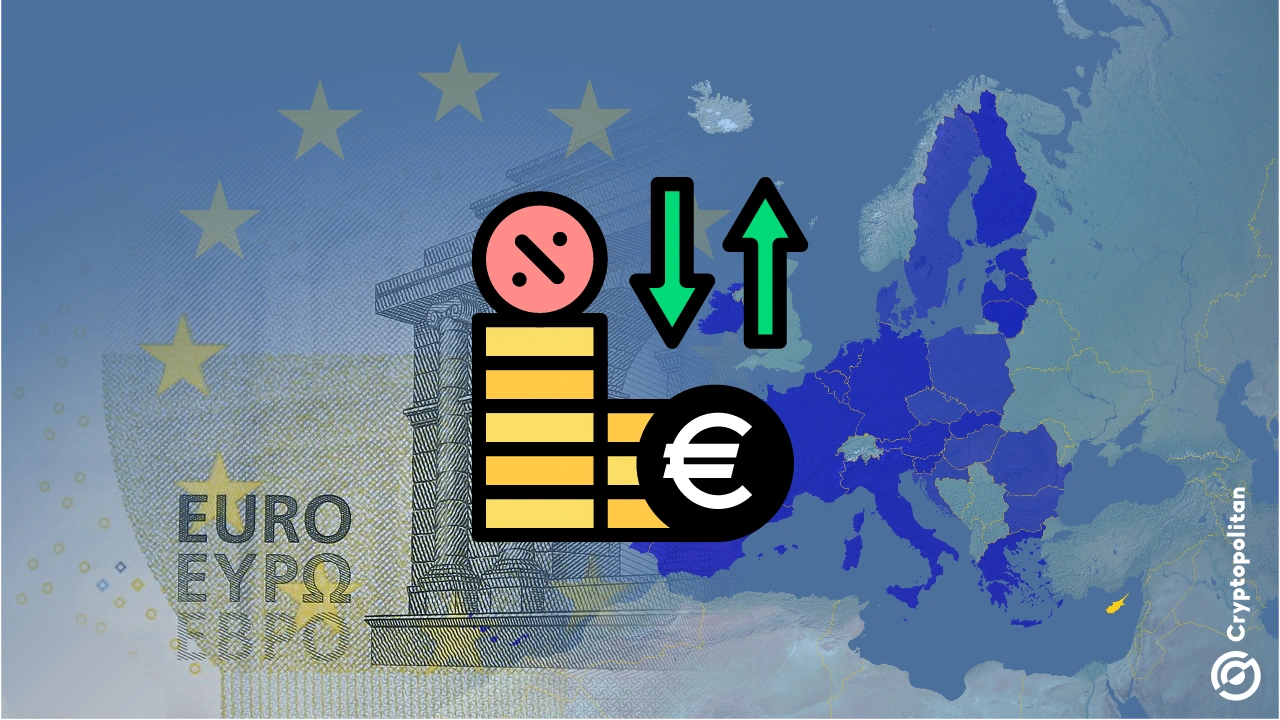
Inflation in the Eurozone shot up to 2.4% in December, the third consecutive monthly rise, according to data from Eurostat. This is a steady climb from November’s revised 2.2% and September’s low of 1.7%.
Economists had predicted this exact figure, but the steady increase adds pressure to the European Central Bank (ECB), which is already expected to cut interest rates multiple times this year to bring its deposit rate down from 3% to 2%.
Core inflation, which excludes volatile items like energy and food, remained stuck at 2.7% for the fourth straight month. Services inflation ticked up slightly to 4% from 3.9%. These figures underline persistent price pressures, especially in services, where wage growth has played a dominant role.
Germany leads the inflation pack, France lags behind
Germany, the Eurozone’s largest economy, saw inflation rise faster than expected, hitting 2.9% in December. In contrast, France’s inflation rate came in at 1.8%, slightly below the 1.9% predicted by analysts.
Italy reported an unexpected slowdown, while Spain’s inflation numbers were stronger than anticipated. These regional variations show how uneven the economic pressures are across the bloc.
Traders kept a close eye on the euro’s movement against the US dollar after the inflation data dropped. The euro gained 0.33%, trading at $1.0424 in London, though speculation remains about whether it could slide to parity with the dollar this year.
If the Federal Reserve adopts a more aggressive stance than the ECB (as expected), the euro might find itself on shaky ground.
ECB’s balancing act and the stickiness of services inflation
The ECB has already cut rates four times recently, but officials are divided over how to proceed now. Most favor gradual reductions of 25 basis points at a time, though some, like Bank of France Governor Francois Villeroy de Galhau, are pushing for more aggressive cuts.
At 3%, the current deposit rate is still seen as restrictive, especially given the bloc’s sluggish economic recovery. Services inflation has remained stubbornly high, hovering around 4% for over a year. Rising wages are the primary culprit, though wage growth is now showing signs of slowing.
Energy prices add another layer of complexity. Europe is burning through gas reserves faster than in any of the past seven years, thanks to a colder-than-usual winter and the ongoing absence of Russian gas via Ukraine. While the ECB expects energy-related inflation pressures to fade, any further shocks could upend these projections.
Growth challenges and political uncertainties cloud 2025 outlook
The Eurozone economy managed modest growth of 0.4% in the third quarter, but the road ahead looks bumpy. Weak manufacturing, political instability, and the potential fallout from US President Donald Trump’s trade policies are all adding to the uncertainty.
His proposed tariffs could trigger retaliatory measures from the EU and China, disrupting global trade and potentially driving up inflation in unpredictable ways.
Klaas Knot, the Dutch central bank chief, raised concerns about Trump’s plans. He warned that cheaper Chinese imports could flood the European market, effectively exporting China’s deflation struggles to the Eurozone. The ECB will have to factor these geopolitical risks into its already delicate policy decisions.
Meanwhile, inflation expectations among consumers are rising. A separate ECB report revealed that consumer inflation expectations climbed in November, a sign that the public isn’t convinced the ECB can rein in prices quickly.
Bond markets barely flinched after the latest inflation data. German two-year yields, often sensitive to ECB policy shifts, dipped slightly to 2.18%. Swaps markets still predict over 100 basis points of easing by the end of the year, reinforcing expectations of steady rate cuts.
ECB President Christine Lagarde struck a cautiously optimistic tone last week, acknowledging the challenges ahead. She reiterated the ECB’s goal of sustainably hitting the 2% inflation target by late 2025. “Hopefully 2025 is the year when we are on target as expected and as planned in our strategy,” she said.
A Step-By-Step System To Launching Your Web3 Career and Landing High-Paying Crypto Jobs in 90 Days.










